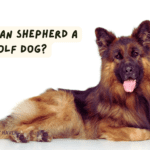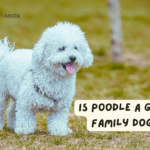Is a German Shepherd right for you? Experts who know the breed will tell you that everything matters. Perhaps a better answer to the question “Which dog is right for you?” lies in several larger questions. What do you want in a dog? Where do you plan to take your dog? How much time (and money) do you have for a dog? What is your lifestyle?
People often choose a puppy because it is cute and attracts them. They later learn that their little puppy is no longer a few pounds, but a full-grown 60 to 80-pound adult with lots of energy and a constant desire to play. The truth is that not all larger dog breeds do well in apartments or comfortable families. How well a dog adapts to a new environment depends on the dog, its training, and its function.
So the first part of the answer starts with asking yourself about your lifestyle, the size of your home, and the amount of time you’re willing to spend with your dog.
There are more than 60 breeds in the herding, working, and sporting group and all have been developed as athletes and capable of a lot of work. This means you should expect the German Shepherd to have plenty of energy and a place for the dog to use it.
The German Shepherd was developed to have a unique work ethic that made them attractive to governments and the public. To fully understand the breed and its work ethic, let’s start by understanding some history and background of the German Shepherd. Having some breed knowledge helps put many of these questions into perspective.
Getting to know the German Shepherd Breed
At the end of the 19th century, Max Emil Friedrich von Stephanitz, while studying at the Berlin Veterinary School, became interested in herding dogs that were used throughout Germany. But instead of pursuing a career as a veterinarian or his dream as a gentleman farmer, he succumbed to family pressure and joined the military.
As a cavalry officer in the German countryside, von Stephanitz came to admire the shepherd dogs he encountered. He noted their keen intelligence and lightning-quick reactions, as well as their special ability to herd sheep. In Germany, flocks of sheep are moved from pens to open spaces along the road where they can graze.
The dog’s job is to keep the sheep on the grassy side of the road, away from fast-moving cars and away from the farmer’s crops. This type of sheep herding is very demanding and is called “guarding” or “frontier” herding. The AKC offers a sport called the Herding “C” course. It reflects this kind of boundary work or, as some call it, the invisible fence.
Traveling with the German army allowed von Stephanitz to continue his keen interest in herding dogs, and he quickly concluded that he could breed a better herding dog. He has spoken to breeders and attended some of the largest dog shows in the country.
In April 1899, his friend Arturo Meyer accompanied him to an exhibition where they saw a dog named Hektor Linksrhein. He was a four-year-old boy with a striking, wolf-like appearance. His intelligence and depth of character sealed the deal and they paid over 200 Deutsche Marks to buy the dog.
With this first dog, von Stephanitz set out to develop the perfect farm dog. He started breeding German shepherd dogs on his vast estate.
His first effort was to emphasize the standardization of the many German herding dog “flavors” that could be identified as sheepdogs. In the beginning, what they looked like was of little importance.
His emphasis was on determining the characteristics he believed to be key to creating the ultimate German shepherd dog. Since herding instincts and their working ability were not an issue. He focused on the erect ears and wolf-like body style that so many breeders admired.
He preferred the smaller and stockier type. Many had wiry coats and curled tails. Some needed better personalities. von Stephanitz crossed dogs from Württemberg in southern Germany, which were generally larger and heavier-boned and had better tractability. He finally found the middle ground he was looking for.
Work capacity and health came first, followed by appearance. Today, when German Shepherds are judged at dog shows. Each is given a quick temperament test by the judge to ensure they have a stable temperament.
A Work Ethic that is Unique to the German Shepherd
From the very beginning, great emphasis was placed on the unique character, and trainability. And protective instincts found in these herding dogs. Their reliability and their special herding qualities have become legendary.
When blind Morris Frank returned from Switzerland with his German Shepherd “Buddy” in 1929, he opened the door for German Shepherds to be used as guide dogs for the blind.
In a very short time, the breed would become associated with programs for the blind and services involving many other disabilities. Their intelligence, trainability, and willingness to work put the German Shepherd at the top of many lists.
Some breeders have started their lines for temperament, as opposed to conformation and physical appearance. It wasn’t long before breeding programs across America began selectively breeding for service dog programs as their ultimate goal.
German Shepherd Owners Have Something to Say
Most owners characterize their German Shepherd by saying that they bought it because it was lively, irrepressible, highly energetic, and strong. Vigilance and attention are often touted as some of the most popular reasons to own one.
Mary Jane says she loves her male German Shepherd because “he’s always close to her kids and stands about 30-40 feet away and watches to supervise their play.” John, who works from home, says: “I love my dog because she always knows where I am and I can rely on her.”
Nancy lives alone in an area with a lot of construction workers. She taught her German shepherd commands in both English and German. When strangers are around him, he uses monosyllabic English and German commands.
He says: “I can tell him in English or German to ‘sit’ or ‘lie down’.” He understands both languages.” She adds, “He stays there with his ears straight and stares at everyone. I love him because he makes me feel safe.”
The breed’s early history also helped shape the image of the GSD. It started with the German military in World War I when the country saw a need for a German military dog.
Since the German Shepherds showed no fear on the battlefield, they carried medical supplies and ammunition and served as a patrol. This made the breed particularly effective during day and night battles.
Read More…
How to Introduce Dogs to Each Other at Home
How To Care For Your Dog Paws in 2024?













